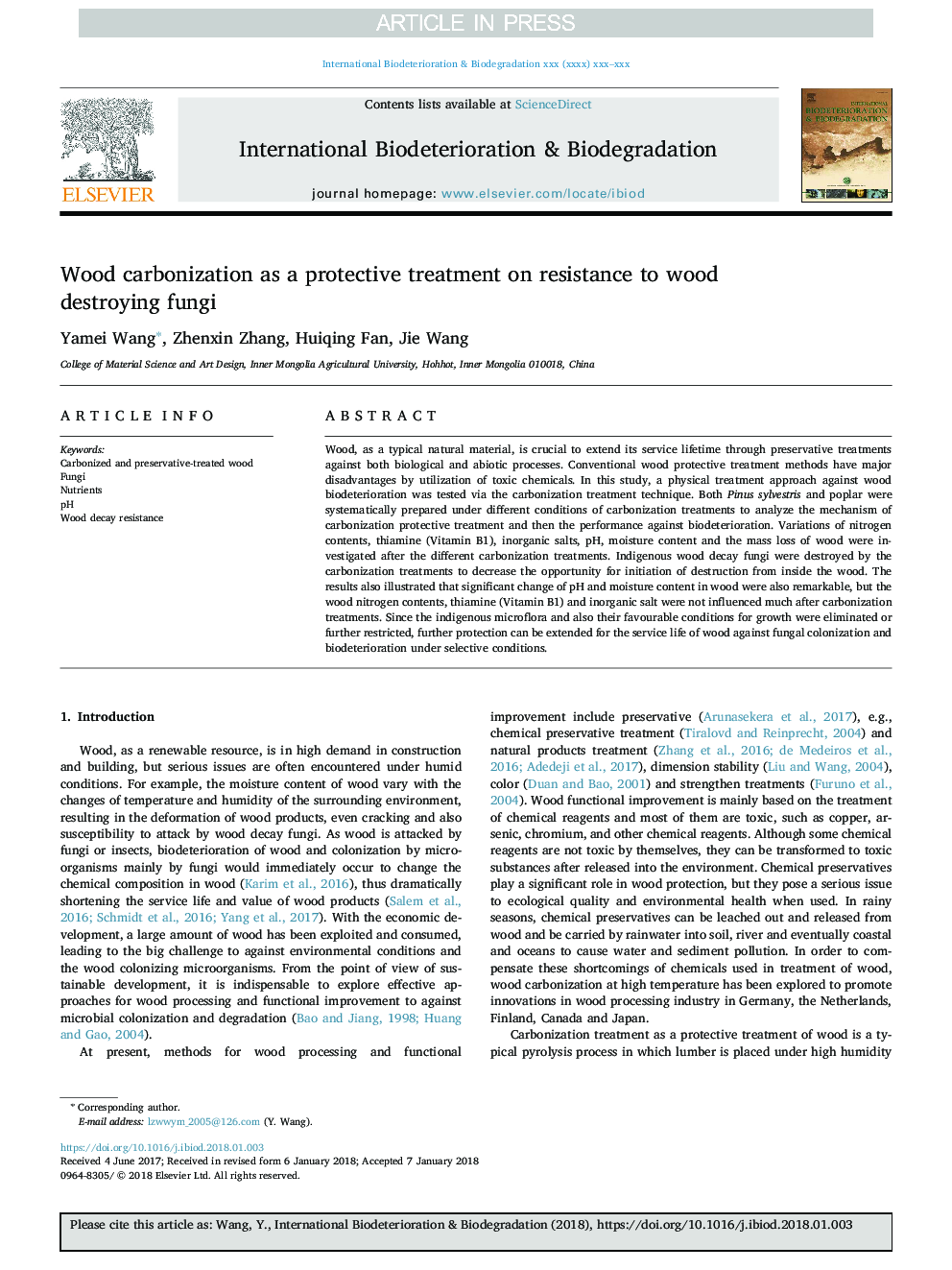| Article ID | Journal | Published Year | Pages | File Type |
|---|---|---|---|---|
| 8843838 | International Biodeterioration & Biodegradation | 2018 | 8 Pages |
Abstract
Wood, as a typical natural material, is crucial to extend its service lifetime through preservative treatments against both biological and abiotic processes. Conventional wood protective treatment methods have major disadvantages by utilization of toxic chemicals. In this study, a physical treatment approach against wood biodeterioration was tested via the carbonization treatment technique. Both Pinus sylvestris and poplar were systematically prepared under different conditions of carbonization treatments to analyze the mechanism of carbonization protective treatment and then the performance against biodeterioration. Variations of nitrogen contents, thiamine (Vitamin B1), inorganic salts, pH, moisture content and the mass loss of wood were investigated after the different carbonization treatments. Indigenous wood decay fungi were destroyed by the carbonization treatments to decrease the opportunity for initiation of destruction from inside the wood. The results also illustrated that significant change of pH and moisture content in wood were also remarkable, but the wood nitrogen contents, thiamine (Vitamin B1) and inorganic salt were not influenced much after carbonization treatments. Since the indigenous microflora and also their favourable conditions for growth were eliminated or further restricted, further protection can be extended for the service life of wood against fungal colonization and biodeterioration under selective conditions.
Related Topics
Life Sciences
Environmental Science
Environmental Science (General)
Authors
Yamei Wang, Zhenxin Zhang, Huiqing Fan, Jie Wang,
